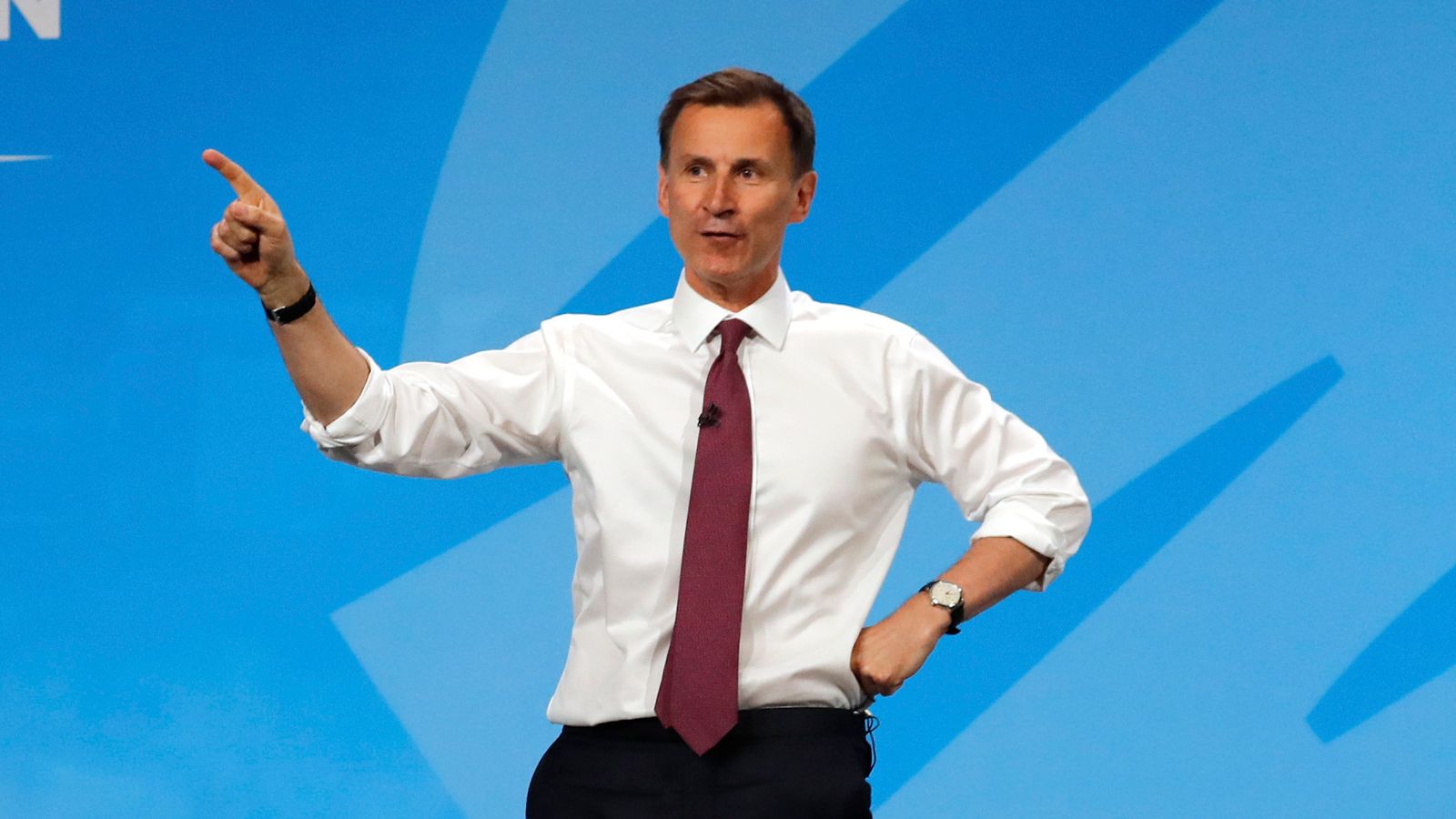The Tories have a bit of an ‘image versus reality’ problem on their hands.
It’s a problem set to dominate and divide them over the coming leadership contest. Put simply, there’s going to be a lot of talk about tax.
This is the reality that the leadership contenders are grappling with: The party that wants to be seen as committed to low taxes, that has campaigned on this ticket for decades, is now taxing us at the highest rate since the late 1940s.
And that is a deeply uncomfortable place for many of them, especially in the face of the deepening cost of living crisis.
Politics latest: Issues under Johnson ‘insurmountable’, says Shapps as Hunt reveals deputy
There has indeed been very significant new taxes introduced under the Boris Johnson/Rishi Sunak regime.
A 1.25% hike in national insurance to help fund the NHS, a rise in corporation tax over five years from 19-25% and a freeze to income tax thresholds, pulling more households into paying it, to name just a few.
Penny Mordaunt joins leadership race: Nine Conservatives now battling it out for top job and keys to No 10
Conservative leadership race: Penny Mordaunt latest Tory to launch bid to replace Boris Johnson as prime minister
Tax plans could decide who leads the Conservatives after Boris Johnson
In fact, the Institute for Fiscal Studies, a tax and spending think tank, commented recently that Mr Sunak had, in little over a year, imposed tax rises of a similar scale to those seen over the 10 years that Gordon Brown was chancellor.
If you’re a low tax Tory that’s got to hurt.
The argument for lower taxes is a simple one in economic terms. If struggling households are able to keep more of their money, not only will their pain be eased, but they’re more likely to spend that money out in the economy which will, in turn, encourage growth and help ward off the recession that experts have predicted is coming.
It makes political sense for the Conservatives too and is, without a doubt, appealing to their base.
There has definitely been a sense in more recent months that Mr Sunak was not just aware but uncomfortable about the ‘high tax chancellor’ label following him around.
It’s why his most recent economic statements have been laced with tax cuts; a move to the national insurance threshold for example, taking significant numbers of lower income families out of the tax altogether, a 5p cut in fuel duty and a promise to cut income tax by the end of the parliament.
While some of this was judged to be progressive, benefiting poorer households predominantly, it hasn’t shifted the overall picture – we are living under one of the highest tax regimes in decades.
But the former chancellor has had pretty good reasons to raise taxes.
The unavoidable reality, and the backdrop to the coming debate, is that he spent £400bn more than he had planned in 2020.
The national debt is the worst it’s been since the Second World War.
With the cost-of-living crisis as bad as it is and the NHS still reeling, there is frankly limited wiggle room to plug that gap with spending cuts – taxes are the only real option.
It might feel that the worst of COVID is over, but the pain of paying for it is only just beginning.
In fact, new analysis from the OBR has looked into how recent changes are likely to affect the long-term deficit in the UK.
It found that things like a reduction in the tax paying population, the cost of net-zero policies and the cost of social care all mean that the total debt in this country is running to around £37bn pounds more than it was pre-pandemic.
And £37bn is one hell of a lot of money to find if you’re also going to cut taxes.
Read more:
Who are the frontrunners to be the next prime minister?
Tax plans could decide who leads the Conservatives after Boris Johnson
The question, of course, is who tax cuts will predominantly benefit and are they the right measure to help people during the current cost of living crisis.
A number of leadership contenders, for instance, have pledged to reverse the planned cut in corporation tax (the main tax that limited companies must pay).
It’s a valid measure when it comes to encouraging investment in the UK, but some will argue, not an immediate help to households struggling to pay their bills.
A reversal in the national insurance rise may prove more popular with voters, but recent changes to the threshold mean the poorest households won’t be paying this tax anyway, so a cut would predominantly benefit the middle class.
Follow the Daily podcast on Apple Podcasts, Google Podcasts, Spotify, Spreaker
There are plenty who argue that spending targeted at the most vulnerable would have a greater impact right now and plenty more who want to see NHS waiting times addressed.
The argument, in essence, boils down to an age-old economic debate: whether growth and prosperity, the path out of tricky economic times, is best forged by higher government income and spending in the here and now, or whether such action simply drives up inflation and debt entrenching and worsening problems for years to come.
That debate has played out viscerally before, not least in the wake of the 2008 economic crash. But the dividing lines then were predominantly between Gordon Brown’s Labour and David Cameron’s Conservatives, remember the George Osborne/David Cameron tagline “get the deficit down”?
This time the argument feels set to divide the Conservative Party from within. Is the party still the stalwart of fiscal caution or has an unprecedented pandemic and cost of living crisis shifted the tone?
Can it be both the party of low tax and prudent deficit management?
And how much does the ‘image versus reality’ problem matter to the Conservatives when faced with one of the gravest economic challenges in generations?







